DISCLAIMER: Always consult with a healthcare professional before starting any new routines, programs, or nutrition plans to ensure you receive the best medical advice and strategy for your specific individual needs.
Known as shinrin yoku, forest bathing is a process of relaxation, immersing yourself in nature, and keeping your senses open to stay engaged with your surroundings. You observe the things going on, slowly walking on a gentle trail. Birds are chirping, streams bubble and gurgle, and the colors of plants and flowers – green, white, pink, and blue – dot the forest floor. The air is filled with the scent of wild herbs, pine needles, and fresh rain, dirt feels springy, and the air is cool, perfectly humid, and invigorating. You are greeted by a visual feast with each step, with dappled sunlight, lush greenery, and forest creatures darting through the bramble and underbrush. Nature has enveloped you, you find yourself calm, relaxed, and rejuvenated, bringing the same energy upon return.
What is Forest Bathing?
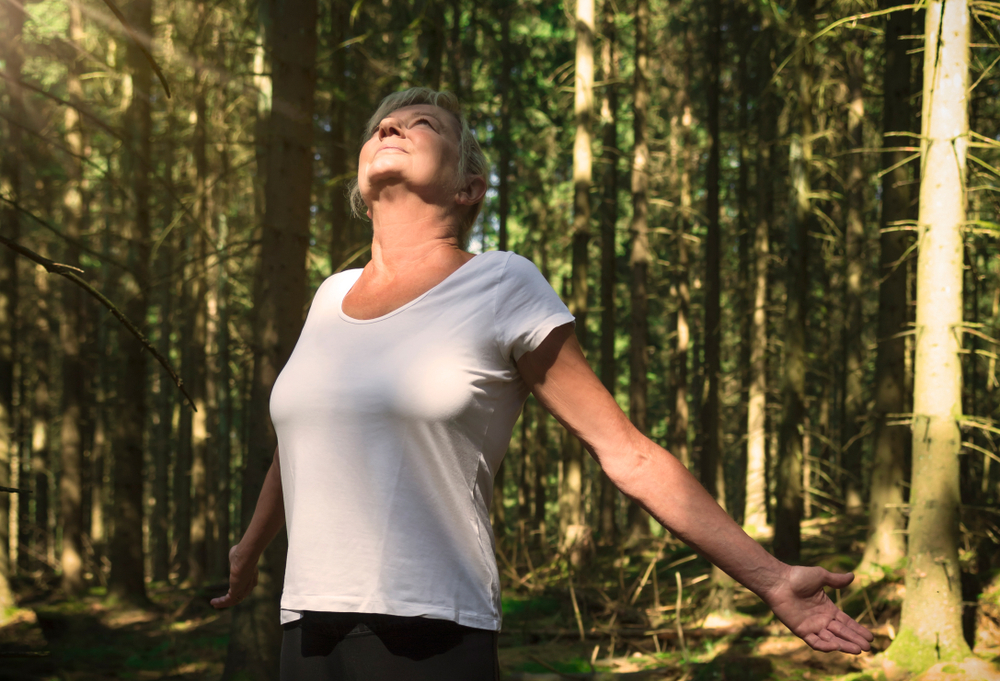 Developed by the Japanese Ministry of Agriculture, Forestry, and Fisheries in the 1980s, shinrin yoku is a therapeutic practice that involves using all of your senses to connect with nature and experience its calming effects. You notice the patterns of shadow and light, the shapes of bushes and trees, and the colors of leaves. You take a moment to listen to the buzzing of insects, the sounds of birds singing, and the rustling of leaves. Taking in the scents of the canopy forest, you notice the smell of mushrooms, magnolias, cherry blossoms, fallen branches, and decaying leaves. You feel the roughness of rock, the softness of moss, and the cracks and bumps on the bark of pine trees.
Developed by the Japanese Ministry of Agriculture, Forestry, and Fisheries in the 1980s, shinrin yoku is a therapeutic practice that involves using all of your senses to connect with nature and experience its calming effects. You notice the patterns of shadow and light, the shapes of bushes and trees, and the colors of leaves. You take a moment to listen to the buzzing of insects, the sounds of birds singing, and the rustling of leaves. Taking in the scents of the canopy forest, you notice the smell of mushrooms, magnolias, cherry blossoms, fallen branches, and decaying leaves. You feel the roughness of rock, the softness of moss, and the cracks and bumps on the bark of pine trees.
A unique environment like no other, with abundant wildlife, towering trees, and lush vegetation, spending time in the forest is a transformative and restorative experience. The soft, textured floor, gentle sounds, and fresh air leave you feeling calm, relaxed, and connected with the present moment, making it a more grounded way of being.
How to Start Woods Bathing?
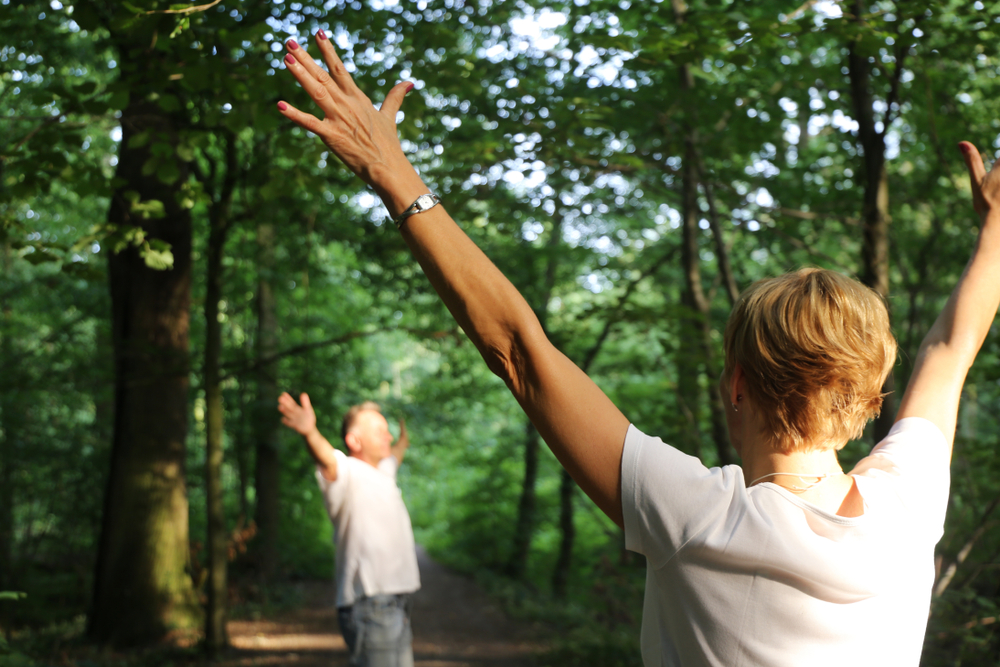 Here’s a step-by-step guide to incorporating this activity into your life
Here’s a step-by-step guide to incorporating this activity into your life
Choose a place and activity
To start forest bathing and experience its therapeutic benefits, you need to find a place that is quiet and safe and resonates with you. This can be a nature reserve, a state or national park, or a forest away from urban areas. Choose a spot that is peaceful and quiet and away from construction sites, airports, highways, and other sources of noise pollution. To avoid potential hazards, make sure the place you visit is safe. Ask the forest or park authorities about recent or current sightings, keep an eye out for any dangerous animals, and stick to marked trails.
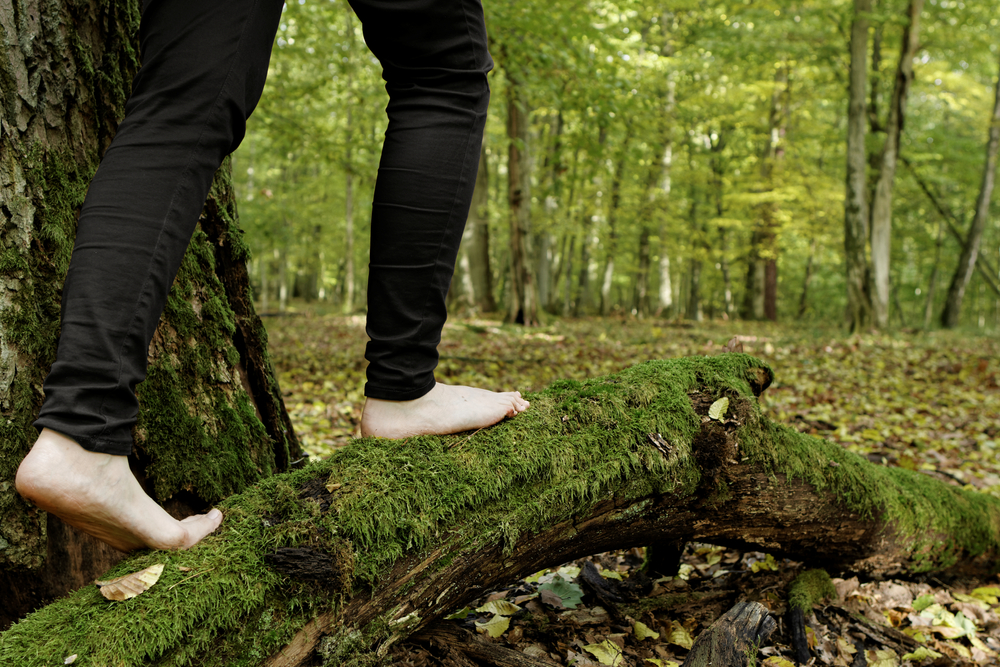
Once you find a spot, you’ll want to choose an activity that is right for you. This can be plant and wildlife observation, Nordic walking, aromatherapy, or breathing exercises. Forest bathing can take many forms, from mindful meditation, yoga, and hot-spring therapy to creative activities such as writing, drawing, and painting in nature.
Do not take smartphones, headphones, and other gadgets with you
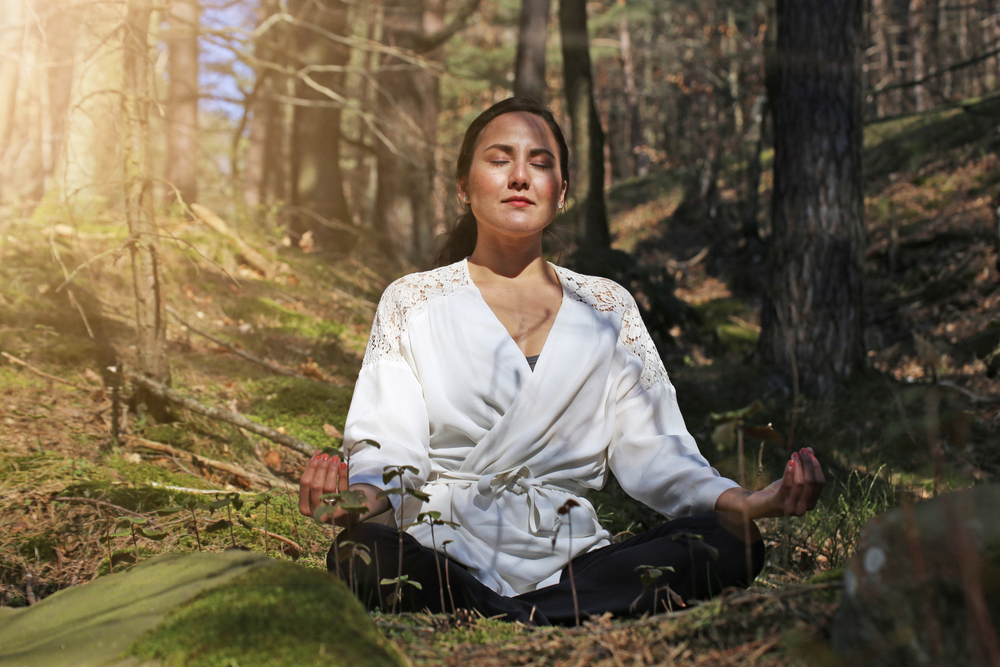 To fully immerse in nature and embrace the experience, disconnect from all of your gadgets, including smartphones, headphones, and tablets. The constant messages, alerts, and notifications can be a source of distraction that keeps you engaged. This can make it difficult to stay present, appreciate the scents, sounds, and sights of nature, and fully immerse in the experience.
To fully immerse in nature and embrace the experience, disconnect from all of your gadgets, including smartphones, headphones, and tablets. The constant messages, alerts, and notifications can be a source of distraction that keeps you engaged. This can make it difficult to stay present, appreciate the scents, sounds, and sights of nature, and fully immerse in the experience.
Do not rush and do not try to follow a certain route

A form of mindfulness practice, shinrin yoku is not about going for an easy run or a type of green exercise. When practicing woods bathing, you are encouraged to slow down, let go of any sense of urgency, and observe and appreciate your surroundings. Instead of planning your route or setting a goal, give yourself the freedom to explore and wander without rushing. Stay fully present, focus on the smells, sounds, and sights, and take note of any interesting plants or wildlife, going nowhere fast. Slowing down allows you to feel, see, and experience more.
Direct all your attention to what surrounds you
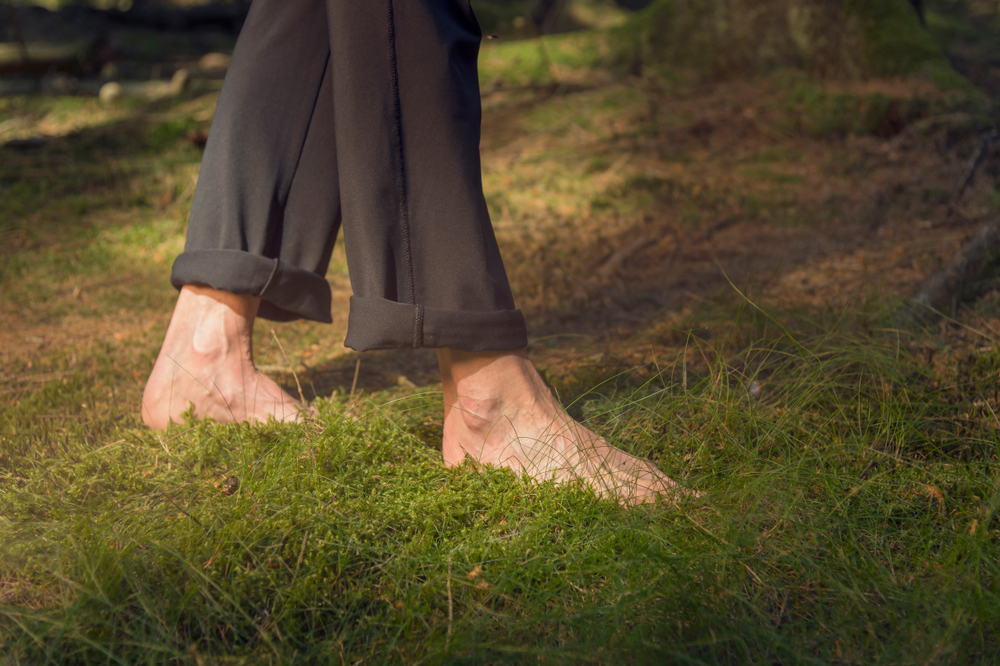 Keep your eyes open and observe your surroundings. Avoid thinking about deadlines or emails and stay mindful and present. You will be surprised by the variety of plants and wildlife that you see while engaging in mindful observation. Allow yourself to fully immerse, pay attention to nature’s small details, feel the soil and leaves, and smell the sweet, woodsy scent of forest air. Let nature enter through your feet, hands, nose, eyes, and ears, wandering aimlessly and slowly. Let the forest in and savor nature’s bounty and serenity.
Keep your eyes open and observe your surroundings. Avoid thinking about deadlines or emails and stay mindful and present. You will be surprised by the variety of plants and wildlife that you see while engaging in mindful observation. Allow yourself to fully immerse, pay attention to nature’s small details, feel the soil and leaves, and smell the sweet, woodsy scent of forest air. Let nature enter through your feet, hands, nose, eyes, and ears, wandering aimlessly and slowly. Let the forest in and savor nature’s bounty and serenity.
What Are Forest Bathing’s Health Benefits?
Here’s how shinrin yoku can transform your well-being.
Reduces your stresses
 Woods bathing has been shown to offer several benefits, including stress reduction. Research suggests that practicing shinrin yoku has a positive effect on chronic stress, and the more stressed individuals are, the better the effect. Depression and hostility have been found to improve while energy levels increase significantly. In addition to depressive states, studies suggest that spending time in the forest is effective against mental fatigue, confusion, anger, and anxiety among working-age people.
Woods bathing has been shown to offer several benefits, including stress reduction. Research suggests that practicing shinrin yoku has a positive effect on chronic stress, and the more stressed individuals are, the better the effect. Depression and hostility have been found to improve while energy levels increase significantly. In addition to depressive states, studies suggest that spending time in the forest is effective against mental fatigue, confusion, anger, and anxiety among working-age people.
Improves your mood
 Walking in nature can help stimulate the production of serotonin, a chemical that regulates mood. At normal levels, serotonin promotes feelings of well-being, calm, and contentment, making you feel happier, emotionally stable, and more focused. Low levels of serotonin, on the other hand, increase the risk for a variety of mood disorders, including anxiety and depression.
Walking in nature can help stimulate the production of serotonin, a chemical that regulates mood. At normal levels, serotonin promotes feelings of well-being, calm, and contentment, making you feel happier, emotionally stable, and more focused. Low levels of serotonin, on the other hand, increase the risk for a variety of mood disorders, including anxiety and depression.
Research also confirms the beneficial effects of nature walks and spending mindful time in the forest. Practicing forest bathing has been found to increase the level of serotonin, thereby improving vigor, mood, and sleep. A recent study in England confirms that spending time in nature results in improvements in rumination, mood disturbance, positive emotions, and compassion.
Frees up your creativity
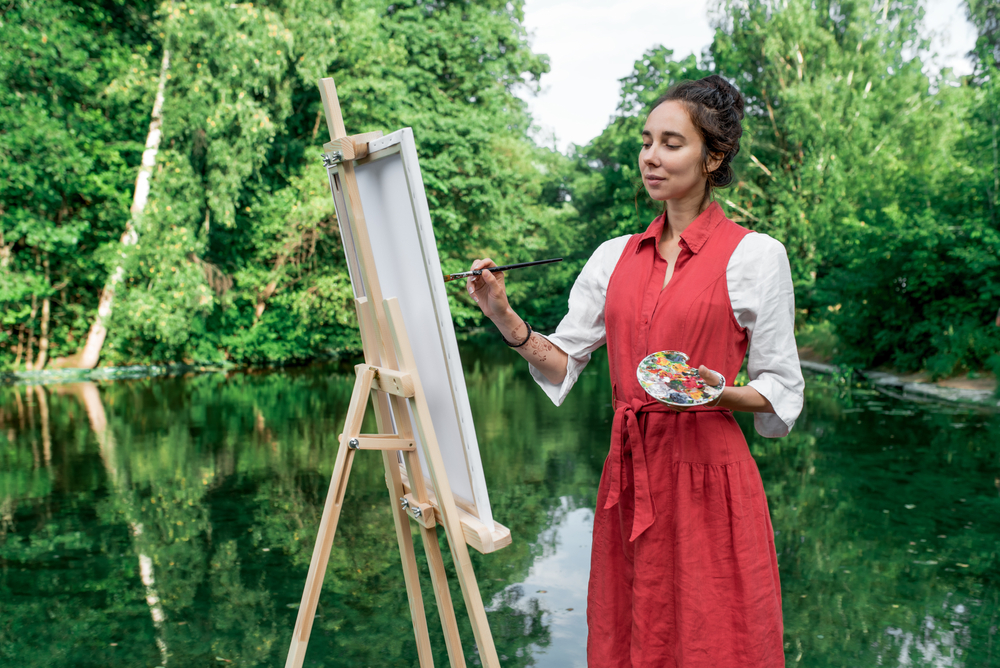 When you spend time in a natural environment, you are removed from the stress, distractions, and noise of city life, freeing up more mental space for creative thinking. Immersing yourself in nature also exposes you to a variety of textures, smells, sounds, and sights which can be a source of inspiration and new ideas.
When you spend time in a natural environment, you are removed from the stress, distractions, and noise of city life, freeing up more mental space for creative thinking. Immersing yourself in nature also exposes you to a variety of textures, smells, sounds, and sights which can be a source of inspiration and new ideas.
The fragrant scents of the forest can evoke memories, emotions, and associations, feeding the creative spirit. The scents of wildflowers, pine, cedar, and eucalyptus can be a source of inspiration for aromatherapists and perfumers.
The sounds of the forest such as birds’ songs, the chirping of crickets, and the buzzing of bees can be a source of ideas for sound artists and musicians. Designers and artists can draw inspiration from the visual beauty of the forest, the natural light, lush foliage, intricate patterns, and changing colors in spring, summer, and fall.
Boosts your immune system
 Spending mindful time in nature can help strengthen your immune system in several ways. First, spending time outdoors can help you get the sunshine and vitamin D you need. Vitamin D plays an important role in regulating specific immune cells as well as your overall immune function.
Spending mindful time in nature can help strengthen your immune system in several ways. First, spending time outdoors can help you get the sunshine and vitamin D you need. Vitamin D plays an important role in regulating specific immune cells as well as your overall immune function.
Second, phytoncides, which are organic compounds produced by fir, cypress, cedar, and pine trees, have anti-inflammatory and antibacterial effects. When you breathe in these essential oils, your body produces more white blood cells which aid immune response and fight off infections.
Third, there is a strong connection between spending time in nature and reduced negative emotions and stress which weaken immunity. Taking nature walks helps reduce the level of cortisol, which is the primary stress hormone.
Reduces high blood pressure
 Several studies have found that practicing shinrin yoku can help regulate blood pressure and prevent hypertension. Spending time in nature, in particular, has a positive effect on older and middle-aged people and on lowering systolic blood pressure which is a risk factor for cardiovascular events. Another study found that engaging in forest bathing helps lower the heart rate and blood pressure in pre-and hypertensive patients, making it a highly effective therapeutic practice.
Several studies have found that practicing shinrin yoku can help regulate blood pressure and prevent hypertension. Spending time in nature, in particular, has a positive effect on older and middle-aged people and on lowering systolic blood pressure which is a risk factor for cardiovascular events. Another study found that engaging in forest bathing helps lower the heart rate and blood pressure in pre-and hypertensive patients, making it a highly effective therapeutic practice.
Accelerates your recovery from illness
 While more research is needed to ascertain how spending time in nature aids recovery, the preliminary evidence is promising, suggesting that being in a natural environment accelerates recovery.
While more research is needed to ascertain how spending time in nature aids recovery, the preliminary evidence is promising, suggesting that being in a natural environment accelerates recovery.
A much-cited study in 1984 found that patients assigned to a three-view room had fewer minor postsurgical complications, took fewer strong and moderate pain medications, and had shorter hospital days.
A more recent study by a research team at Montclair State University found that green roofs on hospitals help decrease stay lengths and pain medication needs, improve respiratory and cardiovascular issues, increase physical activity, improve mental health, and reduce distress. Factors hampering recovery, on the other hand, include litter, crowding, traffic and other machine and urban sounds, cigarette smoke, and ambiguous or abstract sculptures.
The Most Spectacular Locations for Forest Bathing in The United States
Here are a few unforgettable spots perfect for shinrin yoku.
Humboldt Redwoods State Park, Humboldt County, California
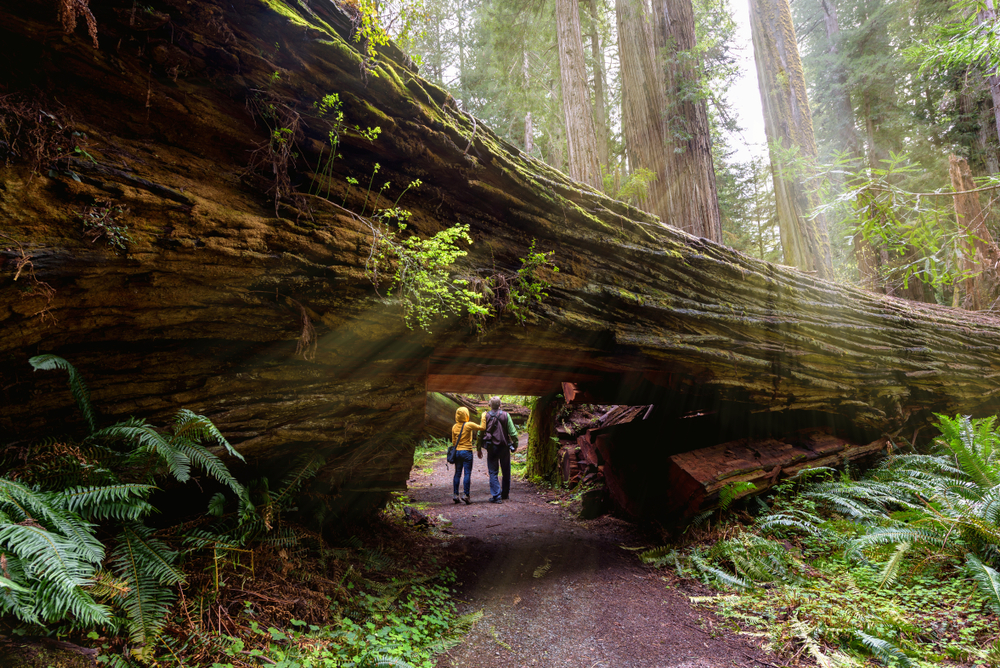 With few crowds, towering trees, and a network of hiking trails, Humboldt Redwoods State Park is an excellent choice for practicing woods bathing. As the park is found in a remote rural location, it can offer quiet seclusion to connect with nature without distraction. There are plenty of secluded and quiet spots to immerse yourself in your surroundings, including Mattole Beach, Rockefeller Forest, Bull Creek Flats, and the Cuneo Creek Horse Camp. You will also find many trails where you can wander for hours away from crowds and noise. Trails that tend to have fewer visitors include the Drury-Chaney Loop, Founders Grove Nature, and Bull Creek Trails.
With few crowds, towering trees, and a network of hiking trails, Humboldt Redwoods State Park is an excellent choice for practicing woods bathing. As the park is found in a remote rural location, it can offer quiet seclusion to connect with nature without distraction. There are plenty of secluded and quiet spots to immerse yourself in your surroundings, including Mattole Beach, Rockefeller Forest, Bull Creek Flats, and the Cuneo Creek Horse Camp. You will also find many trails where you can wander for hours away from crowds and noise. Trails that tend to have fewer visitors include the Drury-Chaney Loop, Founders Grove Nature, and Bull Creek Trails.
Tongass National Forest, Alaska
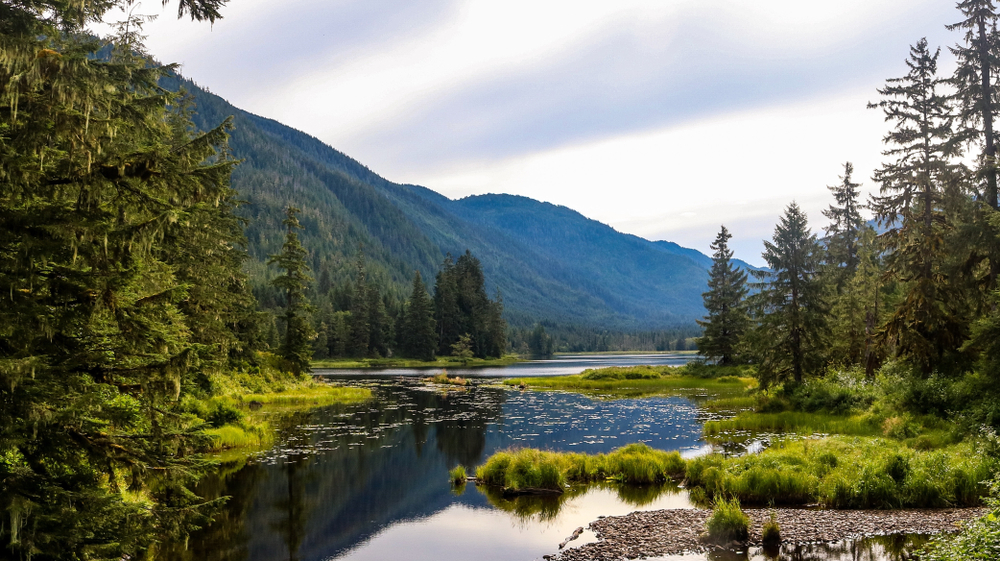 A vast, pristine area in Southeast Alaska, the Tongass National Forest offers plenty of spots and opportunities for forest bathing. Some great spots include the Eagle Beach State Recreation Area, Admiralty Island National Monument, and Mendenhall Glacier. A beautiful and idyllic stretch of beach, the Eagle Beach State Recreation Area is a great place for beachcombing, sunbathing, and wildlife viewing. You will find several trails, like the Rainforest, Outer Point, and Eagle Beach Trails, offering plenty of opportunities for leisurely walks, relaxation, birdwatching, and more.
A vast, pristine area in Southeast Alaska, the Tongass National Forest offers plenty of spots and opportunities for forest bathing. Some great spots include the Eagle Beach State Recreation Area, Admiralty Island National Monument, and Mendenhall Glacier. A beautiful and idyllic stretch of beach, the Eagle Beach State Recreation Area is a great place for beachcombing, sunbathing, and wildlife viewing. You will find several trails, like the Rainforest, Outer Point, and Eagle Beach Trails, offering plenty of opportunities for leisurely walks, relaxation, birdwatching, and more.
Home to an extensive old-growth temperate rainforest, the Admiralty Island National Monument is a remote location with a quiet and peaceful environment and several hiking trails for woods bathing. The trails wind along the shore and through the forest, offering stunning views of alpine lakes, the Indian River, a glacier, and lush green surroundings.
With a range of trails to wander and explore, like the Nugget Falls and Moraine Ecology Trails, the Mendenhall Glacier is a wonderful destination for mindful walking where you can observe wildlife and enjoy the sounds of nature, rustling leaves, rushing water, and birds singing.
Green Mountain National Forest, Vermont
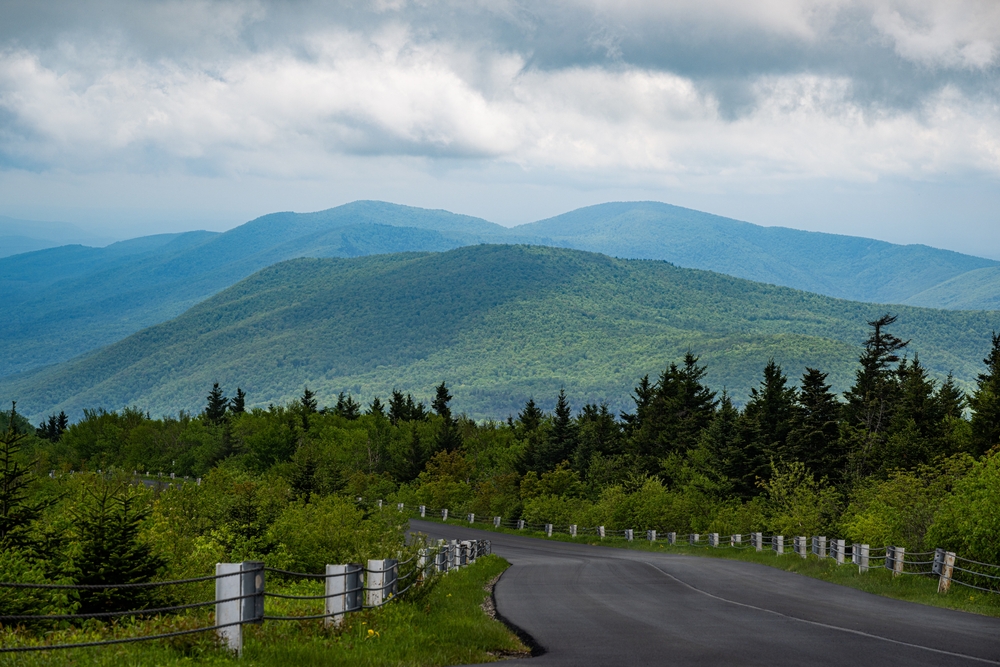 With picturesque waterfalls, stunning fall foliage, and an abundance of wildlife, Green Mountain National Forest offers a variety of trails and natural settings that promote a sense of serenity, calm, and relaxation. You can take Stratton Mountain or Deer Leap Trail to enjoy beautiful views of the valleys and the Adirondack or Green Mountains. While strolling along the trails, you will find plenty of opportunities and spots to practice relaxation and observe wildlife in a forest ablaze with violets, trillium, and asters.
With picturesque waterfalls, stunning fall foliage, and an abundance of wildlife, Green Mountain National Forest offers a variety of trails and natural settings that promote a sense of serenity, calm, and relaxation. You can take Stratton Mountain or Deer Leap Trail to enjoy beautiful views of the valleys and the Adirondack or Green Mountains. While strolling along the trails, you will find plenty of opportunities and spots to practice relaxation and observe wildlife in a forest ablaze with violets, trillium, and asters.
Great Smoky Mountains National Park—North Carolina and Tennessee
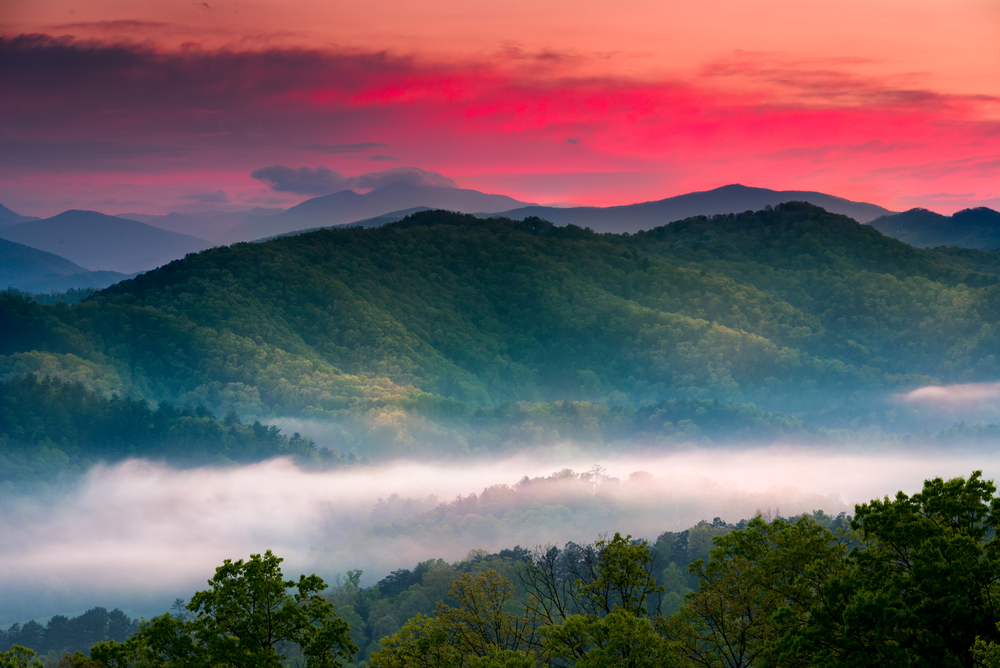 Great Smoky Mountains National Park is the home of a diverse ecosystem, towering rock formations, scenic valleys, beautiful meadows, and high peaks, offering stunning views and serene hiking experiences. The many trails you can take include Abrams Falls, Alum Cave, and Ramsey Cascades, among others, which provide ample opportunities for relaxation, wildlife viewing, camping, and picnicking. The area is known for its rich biodiversity, including more than 240 species of birds and 1,500 species of flowers, offering excellent opportunities to immerse yourself in the scents and sounds of nature.
Great Smoky Mountains National Park is the home of a diverse ecosystem, towering rock formations, scenic valleys, beautiful meadows, and high peaks, offering stunning views and serene hiking experiences. The many trails you can take include Abrams Falls, Alum Cave, and Ramsey Cascades, among others, which provide ample opportunities for relaxation, wildlife viewing, camping, and picnicking. The area is known for its rich biodiversity, including more than 240 species of birds and 1,500 species of flowers, offering excellent opportunities to immerse yourself in the scents and sounds of nature.
Wrapping Up
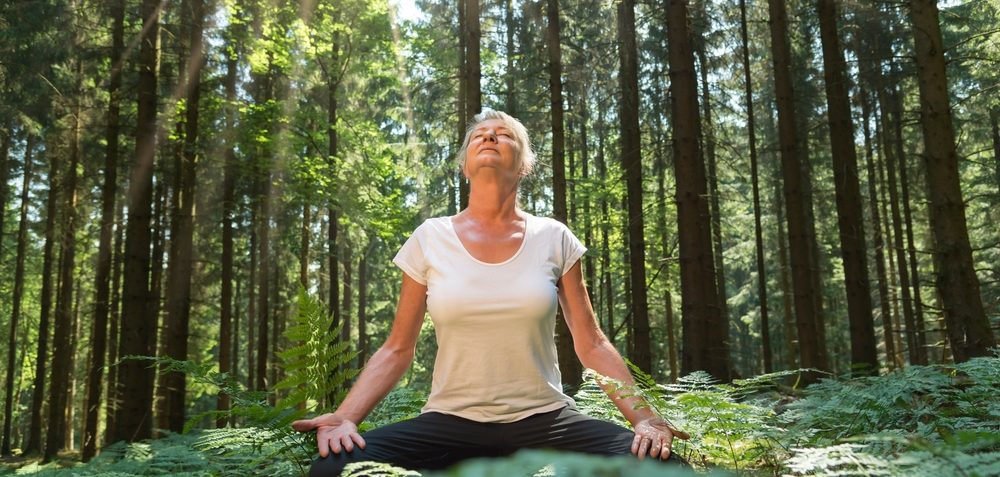 In search of holistic and natural ways to enhance their well-being, many people have discovered the benefits of spending mindful time in nature. Through meditation, yoga, creative expression, forest walks, and sensory awareness, forest bathing offers practitioners the opportunity to immerse themselves in their surroundings, deepen their connection with nature, and experience its healing power.
In search of holistic and natural ways to enhance their well-being, many people have discovered the benefits of spending mindful time in nature. Through meditation, yoga, creative expression, forest walks, and sensory awareness, forest bathing offers practitioners the opportunity to immerse themselves in their surroundings, deepen their connection with nature, and experience its healing power.
Spending time in the great outdoors has been shown to have many emotional, mental, and health benefits. From boosting the immune function and lowering the risk of chronic conditions to reducing stress, anxiety, and depression, practicing shinrin yoku can enhance your health and overall wellness. So, the next time you’re feeling down, stressed, or overwhelmed, take a break from your hectic schedule, power down your phone, and head outside to reconnect with nature and experience its restorative power.
DISCLAIMER: Always consult with a healthcare professional before starting any new routines, programs, or nutrition plans to ensure you receive the best medical advice and strategy for your specific individual needs.


 By Team THOR
By Team THOR
